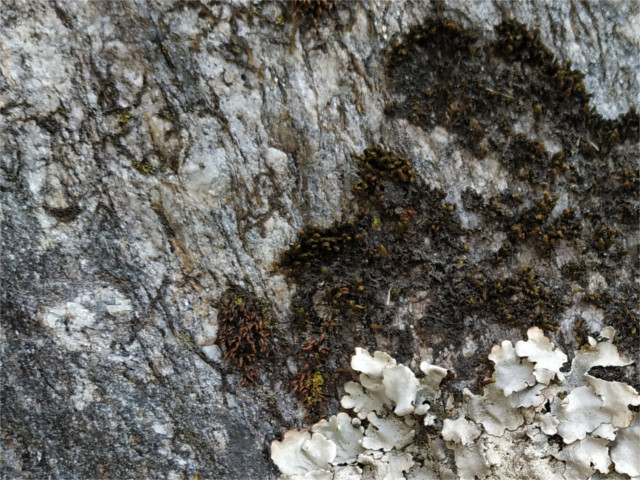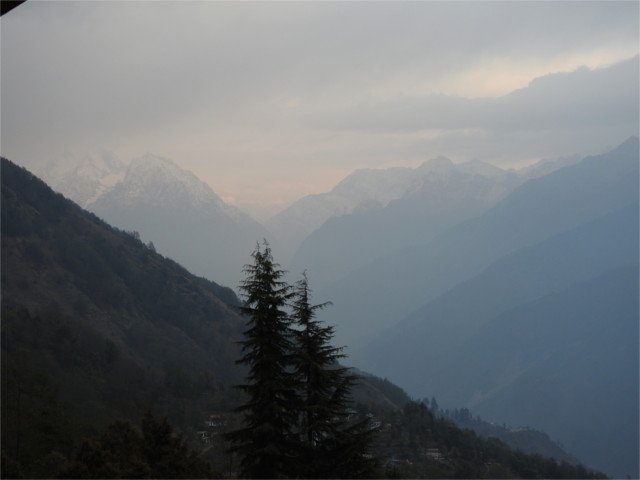Had I heard heavy rain at night while I slept? I looked out of the picture window of the hotel and realized that I had. The previous day the view had been a screen of murky white beyond the town of Munsiyari below us. Today I could see mountains beyond the town. I shrugged a jacket on over my night’s clothes, picked up the camera and walked into the balcony. Cold! To my left I could see Chaudhara peak (altitude 6510 m, featured photo). Straight ahead should be the Panchachauli massif, with its five peaks, the highest being 6904 m. This was clearly further away, because the haze got worse in that direction. If I looked hard I could see a line of mountains there (see the last photo).

Munsiyari has very special geology. It has some of the oldest rocks in the Himalayas, dating back to about 1.9 billion years ago, during the Paleoproterozoic Era. I didn’t look very hard for the characteristic eye-like bubbles in rocks (the famous Augen Gneiss), but I do wonder whether I saw it on the single walk that we squeezed in. But the place is better known as being on the boundary between the lesser and greater Himalayas. In fact, a structure called the Munsiyari thrust (part of something called the Main Central Thrust) is the remnant of an old geological event in which the Indian plate thrust under the Asian plate, and raised the greater Himalayas. The peaks that everyone comes here to see are the lower end of the greater Himalayas.
The Family had joined me on the balcony. We were disappointed at our luck with the view, but something could still be salvaged out of the morning. The air had cleared enough that the smell of smoke was gone. We could go for an hour’s walk before breakfast. I began to stow water and a packet of nuts and raisins into a small backpack as The Family made two cups of tea.

